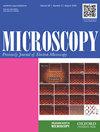Visualization of microstructural change affected by mechanical stimulation in tendon healing with a novel tensionless model
IF 1.8
4区 工程技术
引用次数: 0
Abstract
Since the majority of a tendon’s dry weight is collagen fibers, tendon healing consists mainly of collagen repair and observing three-dimensional networks of collagen fibers with scanning electron microscopy (SEM) is optimal for investigating this process. In this report, a cell-maceration/SEM method was used to investigate extrasynovial tendon (unwrapped tendon in synovial tissue such as the tendon sheath) healing of an injured Achilles tendon in a rat model. In addition, since mechanical stimulation is important for tendon healing, a novel, tensionless, rat lower leg tendon injury model was established and verified by visualizing the structural change of collagen fibers under tensionless conditions by SEM. This new model was created by transplanting the leg of a rat with a tendon laceration to the back, removing mechanical stimulation. We then compared the process of tendon healing with and without tension using SEM. Under tension, collagen at the tendon stump shows axial alignment and repair that subsequently demarcates the paratenon (connective tissue on the surface of an extrasynovial tendon) border. In contrast, under tensionless conditions, the collagen remains randomly arranged. Our findings demonstrate that mechanical stimulation contributes to axial arrangement and reinforces the importance of tendon tension in wound healing.用一种新的无张力模型可视化肌腱愈合过程中受机械刺激影响的微观结构变化
由于肌腱干重的大部分是胶原纤维,肌腱愈合主要由胶原修复组成,用扫描电子显微镜(SEM)观察胶原纤维的三维网络是研究这一过程的最佳方法。在本报告中,使用细胞浸渍/SEM方法来研究大鼠模型中受伤跟腱的滑膜外肌腱(滑膜组织如腱鞘中未包裹的肌腱)愈合。此外,由于机械刺激对肌腱愈合很重要,因此建立了一种新型的无张力大鼠小腿肌腱损伤模型,并通过扫描电镜观察无张力条件下胶原纤维的结构变化进行了验证。该模型是通过将肌腱撕裂伤大鼠的腿移植到背部,去除机械刺激而建立的。然后,我们使用SEM比较了有张力和无张力的肌腱愈合过程。在张力下,肌腱残端的胶原蛋白显示出轴向排列和修复,随后划定了副腱(滑膜外肌腱表面的结缔组织)边界。相反,在无张力条件下,胶原保持随机排列。我们的研究结果表明,机械刺激有助于轴向排列,并加强肌腱张力在伤口愈合中的重要性。
本文章由计算机程序翻译,如有差异,请以英文原文为准。
求助全文
约1分钟内获得全文
求助全文
来源期刊

Microscopy
工程技术-显微镜技术
自引率
11.10%
发文量
0
审稿时长
>12 weeks
期刊介绍:
Microscopy, previously Journal of Electron Microscopy, promotes research combined with any type of microscopy techniques, applied in life and material sciences. Microscopy is the official journal of the Japanese Society of Microscopy.
 求助内容:
求助内容: 应助结果提醒方式:
应助结果提醒方式:


